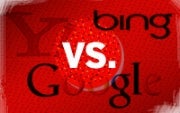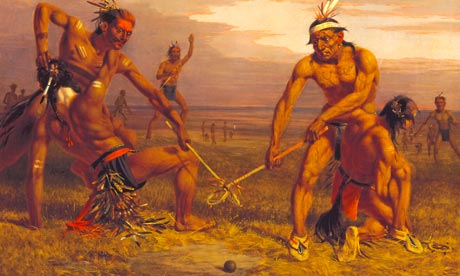SAN FRANCISCO — Each year, Oracle’s presence looms over this city for a week, during the company’s Open World customer conference. About 41,000 people arrived this week to discuss business software in fine detail and talk over beers. Stretches of downtown streets closed and gave way to makeshift tents housing coffee stands, bars, Lego play areas and candy buffets.
Tony Avelar/Bloomberg News
Lawrence Ellison, Oracle’s chief, says bundling software and hardware improves performance and saves customers money.
Jim Wilson/The New York Times
Oracle’s Open World conference drew 41,000 people to San Francisco this week to discuss business software and have some fun.
Justin Sullivan/Getty Images
In hiring Mark Hurd, former chief at H.P., Oracle added an executive who had run a major computer server business.
But Oracle’s annual takeover of San Francisco pales against its larger ambitions — to supply just about all the technology, software and hardware, that businesses might need. This sweeping agenda has rattled the nerves of customers, who fear that Oracle has its own best interests, not theirs, at heart. The worry is that instead of saving money, customers will end up paying more over the long term, and that Oracle, already known for its aggressive tactics, will use its strong position in software to gain even more leverage over a larger array of products.
Companies have long used Oracle’s software to keep track of their most prized information. For Oracle, this resulted in sales of $26.8 billion last year and hints of an annual revenue goal of $100 billion. Over the last five years, Oracle has acquired a staggering 66 companies, most of which were software makers that provided expertise in niche areas.
This year, it bought Sun Microsystems, a hardware maker, signaling its intention to dominate the data centers of businesses by controlling more of their technology purchases. It is a prospect that its traditional partners and, more important, its customers, find unnerving.
“It’s freaking terrifying for some people,” said Jason Carey, a database software developer for a credit services company.
Maureen Miller, who oversees technology infrastructure work for the National Science Foundation, put it this way: “We are becoming an all-Oracle shop, but not by choice. They bought every company we deal with. And we don’t tend to want to put all of our eggs in one basket.”
Lawrence J. Ellison, Oracle’s chief executive, argued that the company’s new strategy would benefit customers. “If you want to go faster and you want a system that is more reliable, you have to be willing to spend less,” he said in his opening pitch at this week’s event, while extolling the virtues of linking hardware and software. But customers are skeptical, and pushing back.
Oracle built its business by dominating the database market, providing the central repositories of crucial information that businesses must maintain and use to complete transactions. This has given it an unrivaled position of power when dealing with customers. Capitalizing on such an edge, Oracle’s sales representatives have earned a fearsome reputation as hard-line negotiators determined to squeeze customers.
But through its acquisition spree, Oracle moved well beyond the database and into business software, buying up the important products that companies use to keep track of their technology infrastructure, employees, sales, inventory and customers.
With Sun, Oracle has found a way to sell customers hardware bundled with all that software in a fashion similar to that of its main database rival, I.B.M. Oracle executives say they can build better, faster, cheaper products this way by engineering complete systems rather than requiring customers to cobble together the parts.
It is akin to the Apple model of limiting choice and controlling the crucial pieces in a computer, as opposed to the PC model, where the Windows software from Microsoft can run on hundreds of different machines.
Later this year, Oracle also plans to give select customers access to a product suite called Fusion. This arrives after five years of work and will unite many of the products Oracle has acquired into a single software platform — one that will combine functions found in rival products from companies like SAP, I.B.M., Microsoft and Salesforce.com.
But customers are objecting to Oracle’s moves. For example, some of Sun’s largest former customers consist of the large Wall Street players, and they pushed back this year when Oracle moved to limit their choices around the Sun technology. Oracle ultimately gave in to their pleas, reaffirming deals that would let Hewlett-Packard and Dell offer prized Sun software on their hardware.
“Customers will always gripe about giving too much control to any one company,” said Israel Hernandez, director of software research at Barclays Capital.
Like it or not, many of the largest technology companies — H.P., I.B.M., Cisco Systems and Oracle — have made their data center conquest plans clear. Oracle now competes directly with its partners H.P. and Dell, as does Cisco, the networking specialist, through its move into computer servers. Meanwhile, H.P., once one of Cisco’s closest allies, has begun a major assault in the networking arena.
“We will see more concentration because that’s where the marketing is going,” Mr. Hernandez said.
At least Oracle has the courtesy to assuage customer’s nerves for one week through its Open World largess.
The downtown tents covering parts of Howard and Mason Streets house alcohol-soaked evenings sponsored by Fujitsu, fully stocked candy bars and Lego playpens where people win prizes from Google for interesting constructions. People also dine inside the tents on 59,000 lunches said to have an eco-friendly touch with 60 percent of the food coming from within 100 miles of the city.
Just outside the tents, show attendees can pick up a Services Serum smoothie at the Dell-sponsored juice bar and then relax on white leather lounges. Or people can look past the white-gloved guards to sneak a peek at the America’s Cup trophy that Mr. Ellison won this year.
But the main party will take place on Wednesday night, when Oracle will bus people to a series of concerts held on Treasure Island, which sits between San Francisco and Oakland. The headlining acts include the Black Eyed Peas, Don Henley and the Steve Miller Band.
Six acts will perform on two stages surrounded by amusement rides, four laser systems, 150,000 cocktail napkins, mounds of food and 12 searchlights beaming into the sky. Typically, a few brave female souls will dance near the music stages, while hundreds of male database gurus sip free drinks and ogle.
“I don’t know if any of the customers or the nerds that show up care that much about the fancy production,” said Christine Stamper, who paid $1,800 to attend the conference and runs her own software consulting business in Portland, Ore. “It’s a little goofy.”
Ms. Stamper said she hoped to learn the latest and greatest about Oracle’s products.
“That they have stayed healthy and grown has meant that I could make an entire career out of this,” she said.
This month, Oracle hired Mark V. Hurd, the former chief executive of H.P., as a co-president. Analysts viewed the hiring as a positive for Oracle as it looks to expand. At H.P., Mr. Hurd oversaw the largest computer server business around and ran the world’s largest technology company.
“As Oracle continues to grow, we need people experienced in operating a $100 billion business,” noted Safra A. Catz, Oracle’s other co-president, at the time of Mr. Hurd’s hiring.
The $100 billion total would put Oracle in the same class as H.P. and I.B.M.
“I read that statement as a signal that Oracle intends to get aggressive and pursue growth,” Mr. Hernandez said. “It implies a step up in mergers and acquisitions.”
Such talk only makes already weary Oracle customers more anxious. And San Francisco officials must wonder if the city could survive the demands of an Oracle four times its current size.












 Charles Deas, Sioux Playing Ball, 1843. Lent by the Gilcrease Museum, Tulsa, Oklahoma. Photograph: courtesy of Denver Art Museum
Charles Deas, Sioux Playing Ball, 1843. Lent by the Gilcrease Museum, Tulsa, Oklahoma. Photograph: courtesy of Denver Art Museum 